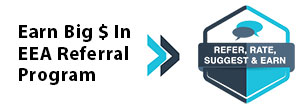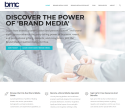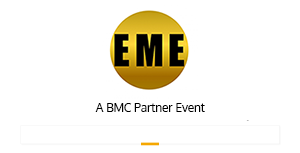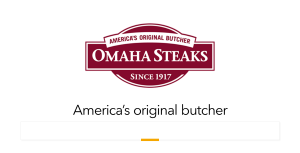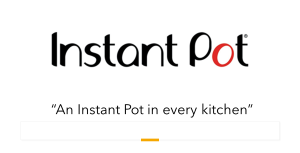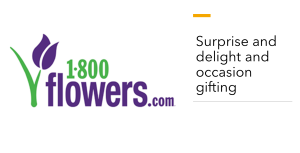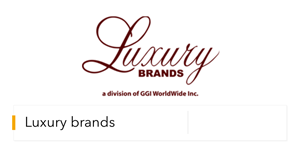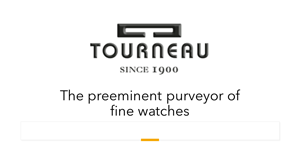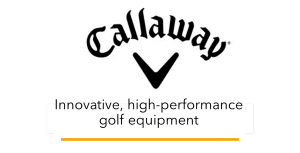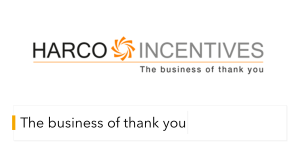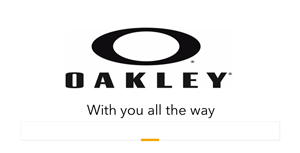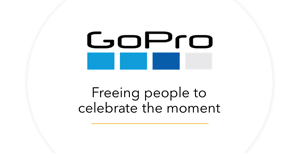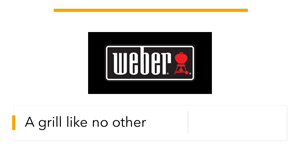News Analysis: ASI Highlights Growing Role of Brands in Promotional Products
According to a 2018 survey of end-buyers conducted by ASI Market Research, 86% consider the brand name on an item to be important when making a promotional product purchasing decision regarding apparel. The Advertising Specialty Institute is the leading media, education and technology company in the promotional products business.
By Bruce Bolger
- The Power of Brand Names
- Increasing Alignment Between Retail Brands and Distributors
- More Brands Enter the Market for Promotional Products and Gifts
- Addressing the Challenges
The promotional products industry is awakening to the growing role of brands in promotional products and gifting programs faster than RRN predicted when its parent company, the Enterprise Engagement Alliance, formed the Brand Experience Coalition (BEC) last year. For the last 20 years or so, distributors have mostly used brands in incentive and recognition programs, but this represents just a small percentage of the $20 billion promotional products industry.
ASICentral.com, the information portal of the Advertising Specialty Institute, recently featured a two-part series on the growing use of brand-name products by distributors in promotional products and gifting programs that independently predicts significant growth potential for brands in the industry. Authored by Sara Lavenduski, with quotes from multiple industry leaders, “Retail and the Promo Products Industry” independently verifies RRN’s predication that brands can play a much larger role in the traditional promotional products and gifting fields.
These articles so closely align with the findings behind the creation of the Brand Experience Coalition of master fulfillment companies, brands and gift certificate companies that RRN has taken the unusual step of highlighting key points verbatim. The implications of this new development cannot be understated for the IRR industry. If retail brands begin to play a major role in the $20 billion-plus promotional products market, they have the potential to revitalize an incentive industry all but decimated by the 2008 recession, when leading brands exited the business en masse.
The key to success is to ensure that the people who bring brands to their clients respect the importance of brand integrity and distribution and understand how to use brands in properly designed programs to help their clients more effectively tell their stories. If selling through distributors opens the door to improper use of brands, the door will quickly close.
Here are the relevant direct quotes from the article, which is must-reading for anyone in the business of bringing brands to the corporate marketplace:
The Power of Brand Names
• “Promotional products buyers have always desired retail-level quality, but the industry was habitually playing catch-up. Now, thanks to trendy new offerings and the availability of top consumer brands, salespeople finally have the power to deliver what clients want.”
• “Retail brands and promo-specific retail-inspired products can stand on equal footing these days. Two examples: Bose wireless headphones from Beacon Promotions; beaconpromotions.com, and Bluetooth noise-cancelling headphones from OrigAudio.
• “Our clients want the look and feel of items on retail shelves,” says Joseph Sommer, owner of Whitestone Branding. “It’s the perceived value. They don’t want their brand put in a closet or thrown away.”
• “While retail once thumbed its nose at promo, suppliers and distributors are now sourcing products directly from the brands themselves and often officially partnering with others.”
• It helps remove what Nina Bloomstein Shatz, Brand Development Director at Halo Branded Solutions, calls the industry’s “tchotchke stigma,” since the prevalence of retail items means promo is steadily moving beyond the smaller, cheaper items that have typically defined the industry. “Are retail trends and promo working hand-in-hand and increasing sales on both sides?” she asks. “Yes, I agree 120%.”
• “Retail in promo is a positive,” says Ann Baiden, CEO and Founder of Innovatex Solutions. “It’s bringing increased value to the industry since we’re associated with name brands.”
Increasing Alignment Between Retail Brands and Distributors
• “The promotional products and retail industries are more aligned than ever. Nowhere is that more obvious than the relationships suppliers have forged with retailers themselves, bringing an influx of brands that see big opportunity in this industry. When Halo’s Shatz started in the industry almost 15 years ago, retail brands were just coming into the space. She was pleasantly surprised each time she found out she could get the retail name-brand item that a client asked for.”
• Says Halo’s Shatz: “Brands want to jump into this industry. Brick-and-mortar isn’t doing so well, so retailers are looking at different ways to market themselves. It’s a way to advertise with co-branding opportunities.”
• “Now we’re surrounded by retail trends,” Shatz notes. “Suppliers provide retail name brands, and the gap between retail and promo items inspired by retail trends isn’t so wide. Our clients are looking to jump on brand-name styles and fabrics. We’re in a place now where they can ask if we can get Nike, North Face or Patagonia, and we can say, ‘Absolutely.’”
• “That means the promo industry will have to continue keeping pace with retail trends and brand-name items. And that’s a good thing: It gives the industry a jolt of relevancy by staying so close to what buyers want. To accomplish that, suppliers and distributors say it’s forcing everyone to step up their efforts – from suppliers offering more brand-name and retail-inspired products to distributors knowing which retail products they can source and what’s realistic for their clients’ needs and budgets.”
• “As long as there’s power in a brand, retail will always influence promo,” says Adam Kovar, Vice President of Marketing and Compliance at ETS Express. “Everyone has their brand allegiances.”
More Brands Enter the Market for Promotional Products and Gifts
• Whitestone’s Sommer says it’s been particularly apparent at large industry trade shows that feature name brands prominently. “Five years ago, those names were just a small portion of the room,” he says. “Now it’s huge. Retail brands have found this industry, and suppliers are getting smarter in offering them.”
• “It used to be that Under Armour would never work in this space; now they do,” says Sommers. “North Face is now the biggest brand at SanMar behind Nike. RuMe partnered with Gemline. Promo is Gemline’s specialty, so RuMe went with them to get their items into this industry, and distributors get to sell top-notch stuff to clients.”
• “Retail brands are realizing promo is a huge industry, worth more than $20 billion, and they want a piece of it,” Sommer explains. “Brands have gotten enough calls from businesses asking for 500 pieces, and it’s the easiest sale. Then they see there’s actually an industry for this.”
• “But it’s not just the size of the industry that’s appealing to them – it’s also the increased demand for high-end items. According to a 2018 survey of end-buyers conducted by ASI Market Research, 86% of end-buyers consider the brand name on an item to be important when making a promotional product purchasing decision regarding apparel.”
• “In an ideal world, promotional products buyers want two things: the retail name, or a product that’s retail in everything but name. For the longest time, the industry struggled to consistently offer either of those options. Now, as retail brands enter the industry, suppliers are also increasingly offering retail-inspired items – products that smartly take their cues from retail but are made specifically and solely for this industry.”
• “With certain capabilities and relationships at their disposal, distributors can also have custom promo products made for their clients. When clothing retailer Madewell wouldn’t sell $80 tote bags to Whitestone Branding for promo use, Sommer got creative. “We told our client we could design and create an even better bag, with an inside pocket and everything,” says Sommer. “We pitched it, got samples made and we crushed it. Now they know they can always come to us. Knockoff retail gives us the opportunity to not be limited to a stock product. Clients can be smarter with their budget and still make an impact.”
Addressing the Challenges
In a companion article, “The Challenges of Selling Retail in the Promo Industry,” the same author addresses some of the key issues that the brands and master fulfillment companies can clearly help distributors address. Again, these are direct quotes from the ASICentral.com article:
• “As exciting as it for reps to sell products from top retail brands, there are significant challenges that can’t be ignored. For one, says Nina Bloomstein Shatz of HALO, the margins on directly sourced products are often razor-thin because of the high price point. “We can absolutely source these items, but we’re making much less money,” she says. “We definitely take a hit.”
• “Before Spector & Co. released its Ashbury line of bags inspired by retail brand Herschel, distributors’ only option to get the same look was to buy them at full price from Herschel and brand them themselves. “Herschel doesn’t want to sell through promo,” says Ann Baiden of Innovatex Solutions. “
• Another related pair of obstacles is inconsistent inventory levels and quick trend turnover. Megan Erber of S&S Activewear says there’s sometimes not enough stock to meet large-quantity orders from brand names, since in retail, once the trend has waned (which can happen quickly with the speed of e-commerce and social media influence), the companies don’t make the styles available anymore. “You can buy things for a month or two at retail, and then it’s gone,” she says. “It’s about a three-month turnover. But this industry needs things to be available for a minimum of two years if it’s going to sell, so it’s first given time to gain traction and then it’s included in programs. And since brands may operate slightly differently from each other, it creates uncertainty for us.”
• “As much as the gap is narrowing between the two, promo will continue to “play second fiddle” to retail, says Jason Lucash, who manages product development for HUB Promotional Group and its eight brands. That typically means available inventory will go to retail first. “If a distributor orders 300 Bose headphones and a retail customer needs hundreds of the same, that inventory is going to retail,” he says. “All of a sudden, you don’t have the stock.”
• “Yet another challenge is brands’ resistance to allowing co-branding on their items when they’re used for a promotional application. Adam Kovar of ETS Express says they must relinquish some guideline control in order to thrive in this industry. “You need a certain level of trust between the retailer and supplier,” he says. “A retailer can’t micromanage what we imprint. They’re hesitant to let go and let us do what we need to do. They might not want co-branding because it’s not part of their messaging. That’s their choice, but they’re losing an opportunity.”
• “Beacon Promotions, part of HUB Promotional Group, offers Bose and JBL headphones to the industry. However, both brands have stipulated the headphones themselves can’t be imprinted with another logo, only the case they come in. “Co-branding often doesn’t jive with brand guidelines,” says Lucash, “When I was at Jansport, it was the same thing. No other imprints were allowed on the bag because it was all about the Jansport brand.”
• “Even if a brand does allow for co-branding, sometimes they require approval of the intended design before selling the items to the supplier. “If they don’t approve, they won’t sell the item to you,” says Baiden. “Retail doesn’t always make it easy for us.”
Bottom line: For distributors to succeed in bringing brands to market, they’ll need to understand the key issues related to accessing and using brands, because no matter how big the opportunity for distributors, it’s only a portion of the retail opportunity.
Master the Principles of Enterprise Engagement to Achieve Organizational Goals and Enhance Your Career
- Profit from a new systematic approach to engagement to enhance your organization’s brand equity; increase sales, productivity, quality, innovation, and safety, and reduce risks.
- Achieve ISO 10018 Quality People Management Certification to demonstrate your organization’s strategic commitment to people to your customers, employees, distribution partners, vendors, communities, investors, and regulators.
Live Education: Enterprise Engagement in Action Conference at Engagement World, April 3, 2019, in San Francisco, in conjunction with the Selling Power Sales 3.0 Conference. Learn about the economics, framework, and implementation process for an ISO certifiable approach to achieving organizational objectives by strategically fostering the proactive involvement of all stakeholders. Learn more and register now. 

The first and most comprehensive book on Enterprise Engagement and the new ISO 9001 and ISO 10018 quality people management standards.
Online: The Enterprise Engagement Academy at EEA.tmlu.org, providing the only formal training on Enterprise Engagement and the new ISO 9001 and ISO 10018 quality people management standards. Provides preparation for professionals to support organizations seeking ISO 10018 employer or solution provider certification, as well as elective courses on Trade Show Engagement, Rewards and Recognition, Government, and other topics.
Plus: 10-minute short course: click here for a 10-minute introduction to Enterprise Engagement and ISO standards on Coggno.com.
 Services: The International Center for Enterprise Engagement at TheICEE.org, offering: ISO 10018 certification for employers, solution providers, and Enterprise Engagement technology platforms; Human Resources and Human Capital audits for organizations seeking to benchmark their practices and related Advisory services for the hospitality field.
Services: The International Center for Enterprise Engagement at TheICEE.org, offering: ISO 10018 certification for employers, solution providers, and Enterprise Engagement technology platforms; Human Resources and Human Capital audits for organizations seeking to benchmark their practices and related Advisory services for the hospitality field.
The Engagement Agency at EngagementAgency.net, offering: complete support services for employers, solution providers, and technology firms seeking to profit from formal engagement practices for themselves or their clients, including Brand and Capability audits for solution providers to make sure their products and services are up to date.
C-Suite Advisory Service—Education of boards, investors, and C-suite executives on the economics, framework, and implementation processes of Enterprise Engagement.
Speakers Bureau—Select the right speaker on any aspect of engagement for your next event.
Mergers and Acquisitions. The Engagement Agency’s Mergers and Acquisition group is aware of multiple companies seeking to purchase firms in the engagement field. Contact Michael Mazer in confidence if your company is potentially for sale at 303-320-3777.
Mergers and Acquisitions. The Engagement Agency’s Mergers and Acquisition group is aware of multiple companies seeking to purchase firms in the engagement field. Contact Michael Mazer in confidence if your company is potentially for sale at 303-320-3777.
Enterprise Engagement Benchmark Tools: The Enterprise Engagement Alliance offers three tools to help organizations profit from Engagement. Click here to access the tools.
• ROI of Engagement Calculator. Use this tool to determine the potential return-on-investment of an engagement strategy.
• EE Benchmark Indicator. Confidentially benchmark your organization’s Enterprise Engagement practices against organizations and best practices.
• Compare Your Company’s Level of Engagement. Quickly compare your organization’s level of engagement to those of others based on the same criteria as the EEA’s Engaged Company Stock Index.
• Gauge Your Personal Level of Engagement. This survey, donated by Horsepower, enables individuals to gauge their own personal levels of engagement.
For more information, contact Bruce Bolger at Bolger@TheEEA.org, 914-591-7600, ext. 230.

.jpg)
